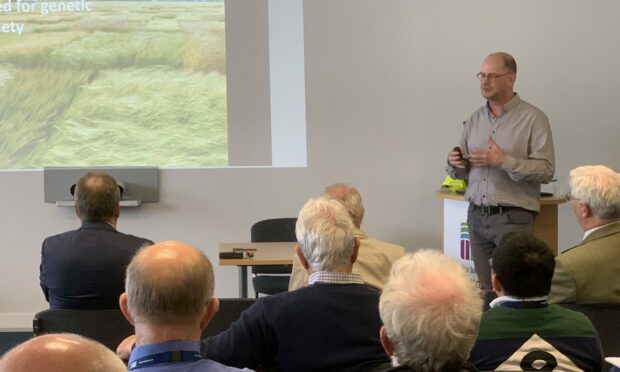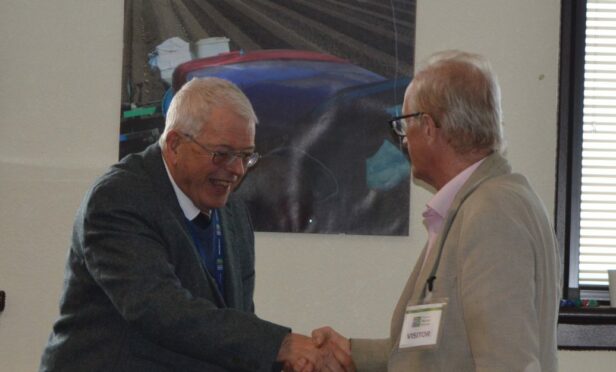A leading crop scientist has emphasised the importance of education, transparency and social dialogue in achieving widespread acceptance and trust of gene editing techniques in agriculture.
However, in the week the UK Government introduced new legislation to speed up the development of gene-edited crops, Dr Craig Simpson – a plant molecular biologist and experimental scientist at the James Hutton Institute – pointed out the technique was not a panacea, and in some cases conventional breeding or GM would be the best way of transferring genes.
Speaking to a meeting of the Scottish Society for Crop Research (SSCR) at Invergowrie, Dr Simpson said: “It will not replace good farming practice and land management. We will need to use everything we’ve got.”
Dr Simpson said it was essential for scientists to be open and to explain precisely what is involved in gene editing – even if it is difficult to understand.
“For instance, one of the main reservations expressed by the public is that releasing new crops into the environment could have an impact on wild populations. But all crops – whether conventional, GM or gene-edited – can affect the genetic diversity of a wild population,” he said.
“A third of the wild hybrids found in the British Isles have one or more foreign parents, largely as a result of garden centres bringing in plants from around the world which have cross hybridised with some of our wild hybrids, “Genetic exchange has been observed between oilseed rape and wild turnip in the UK. So hybridisation can happen.”
Precision
Dr Simpson said gene editing – otherwise known as precision breeding – is exciting for agriculture because it can optimise crop production.
“Global agriculture is under a lot of pressure, with more mouths to feed,” he said
“Yields are beginning to plateau out, so we need to develop new crops, and farmers are having to reduce inputs. We also waste a third of our food, the amount of land we have is becoming more limited, we need to adapt to a changing climate, and we have to deal with declining biodiversity. Also war has highlighted the limitations of our food chain, so there is a need for us to increase our food production,”
Benefits
He added that gene-editing brought benefits such as improved nutrient content, increased carbon sequestration, extended shelf life, improved flavour, disease resistance, and adapting varieties to year-round production.
SSCR chairman, Dr Keith Dawson said the society was extremely supportive of the technology.
“We hope the Scottish Government can recognise its promise and come into line with legislation elsewhere in the world while still protecting the important provenance of our Scottish produce,” he said.
Dr Dawson also presented a gift to Dr Bill MacFarlane Smith in honour of his long service as the society’s honorary secretary.


